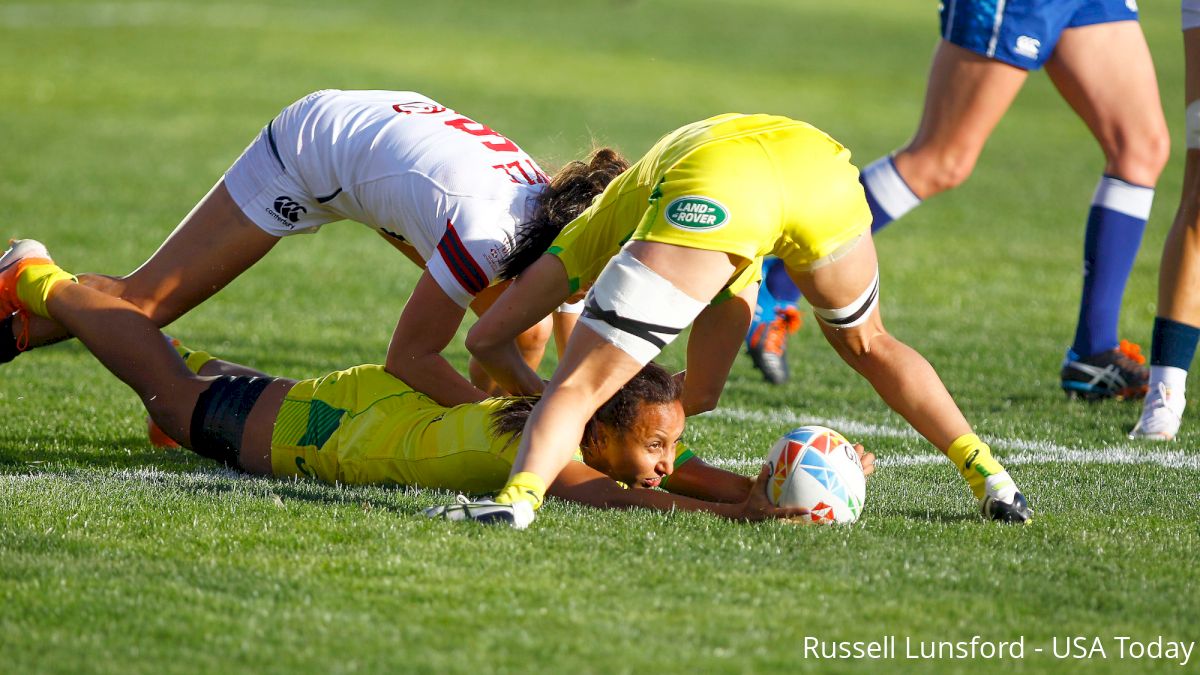Rugby Rules 101: What Does "Ruck" Mean?
Rugby Rules 101: What Does "Ruck" Mean?
The term "ruck" tends to be a confusing one to new players, but we're here to help clarify just what it is.

For new players to the game of rugby, the concept of a "ruck" can be a tricky one to apprehend, as there is no other sport that involves rucking. However, once you've got a clearer picture of a ruck, also known as a "breakdown", it's a relatively easy thing to understand.
Here is a guide to what a ruck is, and the specific laws surrounding the breakdown:
First off, what is a ruck?
One of the biggest things that separates rugby from American football is that once a player is tackled, the game does not stop. In rugby, once a player is tackled to the ground, he/she is allowed to make one movement on the ground before they must release the ball. The point of this is to prevent tackled players from holding onto the ball and grinding the entire game to a stop.
So, given that a player who is tackled must let go of the ball, this opens up the opportunity for the defense to snatch the ball up when the player releases it. To prevent a defender from reaching down and grabbing the released ball off the ground, the teammates of the tackled player can engage the defender and attempt to ruck them off of the ball to maintain possession.
When does it become a ruck?
A ruck is formed when at least one player from each team is "engaged" in contact over the ball. The referee determines when the engagement is formed, and will usually say "ruck formed" when he/she has deemed that this has occurred. Once the ruck is formed, no player from the defense is allowed to touch the ball with their hands. If they do it is a penalty awarded to the attacking team for "hands in the ruck." Once the ruck is formed, the defense's only option for contesting the ruck is to drive through the breakdown and move the attacking ruckers off of the ball.
How big is a ruck?
The size of a ruck first depends on the positioning of the body of the tackled player on the ground. The width of their body on the ground determines the width of the ruck, which is known as the "gate." His/her supporting teammates can only enter the ruck through the gate, and the same goes for the defensive players attempting to come and steal the ball or join the ruck. If a player enters the breakdown from outside of the gate, it is a penalty for "coming in from the side."
Additionally, the hind foot of the furthest back defensive player in the ruck sets the offsides line for the defense. All of the defensive players must not cross the offsides line until the ball is out from underneath the ruck. If a defender creeps in front of the line before the ball is out, he/she will be pinged for "offsides."
A ruck can have as many players as possible from either team, but be aware that the more players you have in a ruck defensively, the likelihood is that the defensive offside line will be moved further and further back.
How can you enter a ruck?
As mentioned earlier, players must enter a ruck through the gate and not from the side. Furthermore, players entering the ruck must stay on their feet as they go into contact. This is a safety issue and prevents the breakdown from becoming a free-for-all.
Often times, a defender will beat the attacking team to the ruck and get his/her hands on the ball before the ruck is formed. As the defender attempts to steal, or "poach/jackal", the ball, attacking ruckers have an opportunity to hit them off of the ball and cause them to drop it.
However, they have to be able to stay on their feet and not leave the ground, which is known as "diving over." Likewise, the defender that is trying to poach the ball must maintain their own body weight when grabbing the ball. A good gauge of this for the referee is to determine whether the defender would be able to stay on his/her feet if you pulled their arms out from underneath them. Basically, would they be able to stay up on their feet if it wasn't for their arms or hands? If they can't, then the ref will penalize them for "going off their feet."
What about the tackler and the tackled player?
The players who are involved in the tackle all have a responsibility on the ground as well. The player who is tackled is allowed to make one movement on the ground, and then must let go of the ball. The movement can be a roll, or a a quick crawl, or whatever the player wants to do, but it must be just one motion. If they haven't released the ball after their move, then the ref will penalize them for "not releasing," or "holding on."
On the flip side, the tackler must roll away from the tackle area before getting back to their feet. This is to prevent the ruck area from getting overcrowded and slowing down the ball. If the player who makes the tackle is able to stay on their feet, they must let go of the ballcarrier, giving them an opportunity to release the ball back to their own team. If the defender doesn't roll away after the tackle, they will be pinged for "not rolling away." If they do not release the tackled player then they will be penalized for "not releasing."